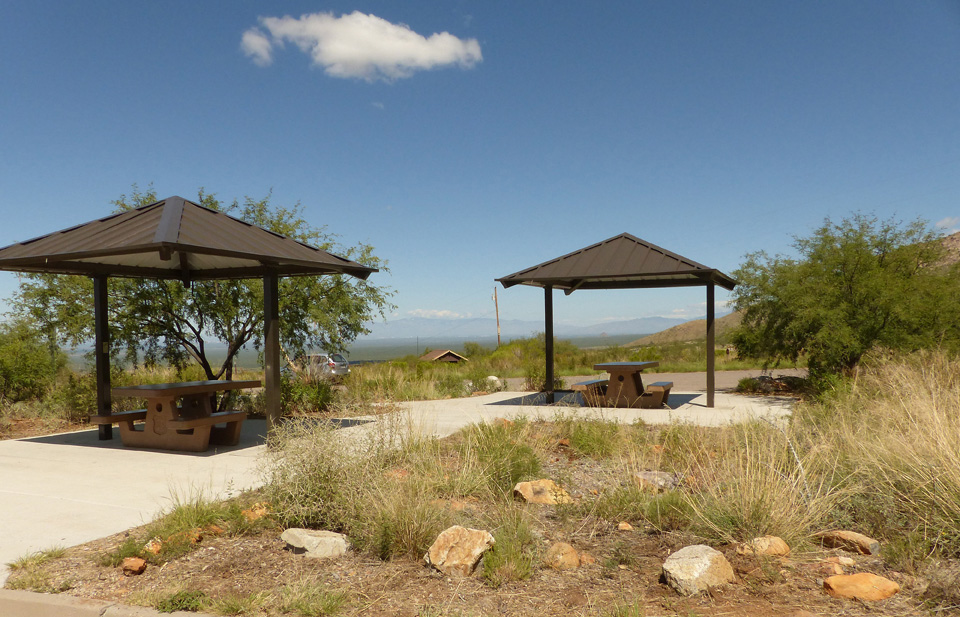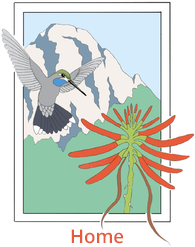Stewardship
Stewardship is the heart of the Friends of Madera Canyon mission—a commitment not only to protect this unique Sky Island ecosystem, but to actively care for it, learn from it, and ensure its vitality for generations to come. In Madera Canyon, stewardship means embracing a deep responsibility for the land, its wildlife, and its cultural heritage. It’s a living promise to conserve, preserve, and restore—each action guided by respect, science, and community.
Conservation efforts focus on understanding and protecting the canyon’s rich biodiversity, from monitoring native bat populations to educating visitors about erosion and invasive species. Preservation safeguards the canyon’s natural beauty and ecological integrity, ensuring that its trails, habitats, and historical features remain undisturbed and accessible. Restoration breathes new life into damaged areas, whether through replanting native pollinators, repairing trails, or collaborating with partners to rehabilitate sensitive landscapes.
Stewardship also means fostering a culture of awareness and care. Through volunteerism, education, and collaboration with the U.S. Forest Service and local organizations, Friends of Madera Canyon empowers people to become active participants in the canyon’s future. Whether it’s packing out litter, planting native species, or simply staying on the trail, every action contributes to the health of this treasured place.
In Madera Canyon, stewardship is not a single act—it’s a way of being. It’s the quiet work of hands in the soil, the shared knowledge passed between hikers, and the enduring belief that nature thrives when we choose to protect it together.
The Geography of Hope
The Friends of Madera Canyon are but one manifestation of the groups that “declare our dependence on the Earth and our responsibility to it.” Wallace Stegner, Pulitzer-Prize winning novelist, wrote these words in an essay titled It All Began with Conservation. Stegner went on to state that “We are still in transition from the notion of Man as master of Earth to the notion of Man as a part of it.”
Many of you have read such authors as Edward Abbey (Desert Solitaire: A Season in the Wilderness) and Aldo Leopold (A Sand County Almanac), luminaries in the literature about conservation and wilderness. Stegner was more well-known for his fiction: Angle of Repose, Big Rock Candy Mountain, Crossing to Safety, The Spectator Bird, among many other titles. But, beginning in the 1960s, Stegner also wrote prolifically about environmental issues. He brought to his essays, non-fiction books and novels a passion for the West unparalleled in the American literary scene.
In 1960, in the midst of the campaign to persuade Congress to pass The Wilderness Act which had been debated for years, Stegner wrote a letter to David Pesonen, a UC Berkeley professor charged with working on a portion of the Outdoor Recreation Resources Review Commission’s report focused on the wilderness. The letter became known as “The Wilderness Letter,” well-known to generations of environmental activists, and, in the 1960s, read on occasion by Interior Secretary Steward Udall as the text of speeches Udall gave in defense of public lands in general and wilderness in particular.
Stegner began: “If I may, I should like to urge some arguments for wilderness preservation that involve recreation, as it is ordinarily conceived, hardly at all. Hunting, fishing, hiking, mountain-climbing, camping, photography, and the enjoyment of natural scenery will all, surely, figure in your report. So will the wilderness as a genetic reserve, a scientific yardstick by which we may measure the world in its natural balance against the world in its man-made imbalance. What I want to speak for is not so much the wilderness uses, valuable as those are, but the wilderness idea, which is a resource in itself. Being an intangible and spiritual resource, it will seem mystical to the practical-minded—but then anything that cannot be moved by a bulldozer is likely to seem mystical to them.”
In short, Stegner maintained that simply the idea of wilderness was valuable. To know that there are still great tracts of wilderness preserved is important for our spiritual well-being, even if we never set foot in them ourselves.
Later in his letter, Stegner proposed, “Something will have gone out of us as a people if we ever let the remaining wilderness be destroyed…never again [to] have the chance to see ourselves single, separate, vertical, and individual in the world, part of the environment of trees and rocks and soil…part of the natural world and competent to belong in it.”
Stegner’s letter concluded: “We simply need that wild country available to us, even if we never do more than drive to its edge and look in. For it can be a means of reassuring ourselves of our sanity as creatures, a part of the geography of hope.”
As members of the Friends of Madera Canyon, you and I have declared our commitment to “preserve, conserve, and restore” the Canyon, to the best of our abilities. Much of the work of the Friends since 1987 has focused on recreation, as Stegner described it above, particularly in the lower Canyon, below where the Mt. Wrightson Wilderness begins. In essence, the Friends have participated in facilitating visits by the general public whose main interest is to “drive to its edge and look in.”
We also know that the lower Canyon is the foyer to the wilderness where no man-made structure or excessive alterations are welcomed, where those who enter it choose to be “part of the trees and rocks and soil” and little else. As stewards of this point of entry, the Forest Service and the Friends collaborate to educate visitors to “pack it in, pack it out” and “take pictures and memories but leave only footprints.”
For many, Madera Canyon might be the closest they will come to the “idea” of wilderness, in Stegner’s words. Surely, the Canyon is, for many, a place of refuge from the bewildering world of modern life. It is a part of the geography of hope.
When you are in the Canyon, don’t you stop and listen occasionally to the quiet or to the music of the birds? Don’t you get a kick out of walking by the deer as they take note of you and then continue with their grazing? Don’t you look up the mountainsides and marvel how grand the view and how small you seem in relation to it?
You and I live in interesting times. The geography in which we can find hope has transcended scores of “interesting times.” If we are successful stewards in our time, it will transcend scores more. I find comfort in that connectedness—to the past, to the future, to the land.
Dan White
Capital Improvement & Conservation Projects
Since the organization’s inception in 1987, the Friends of Madera Canyon has taken an active roll in assisting the USFS with construction, upgrade, repair & maintenance of canyon facilities and amenities, always with safety, protection and conservation in mind. Over 1 million dollars and thousands of volunteer hours have been donated to parking, restrooms, picnic facilities, trail heads/trails, bridges, natural history interpretive exhibits, habitat preservation/rehabilitation and nature education. The following is a list of recent projects
- Madera Parking & Picnic Area (West) Eagle Scout BGINT exhibit landscape & re-vegetation project
- Madera Canyon Road Bridges Project landscape & re-vegetation project
- Friends of Madera Canyon Honor Wall/retaining wall construction
- Proctor Native Plant and Pollinator Landscape (Proctor Parking Area) re-vegetation project
- Proctor (ADA) Accessible Trail and Madera Creek viewing area
- Amphitheater bench seat replacement
- Aligned 300-feet of Old Baldy Trail and restored six CCC-era culverts to move water properly off the trail and into a nearby stream.
- Restored 634-feet of eroded slope between Old Baldy and Super Trailheads by building mini-rock terraces and planting 270 native pollinator plants, grasses and shrubs to stabilize hillside
- Installed Restoration Partners sign
- Installed Indigenous people’s sign
- Installed pollinator signs
- Replacement of 44 rusted grills throughout Madera Canyon
Today thanks to volunteers and the United States Forest Service we are working hard to keep the canyon clean and trails groomed for your enjoyment. There are many ways you can help us with this work.
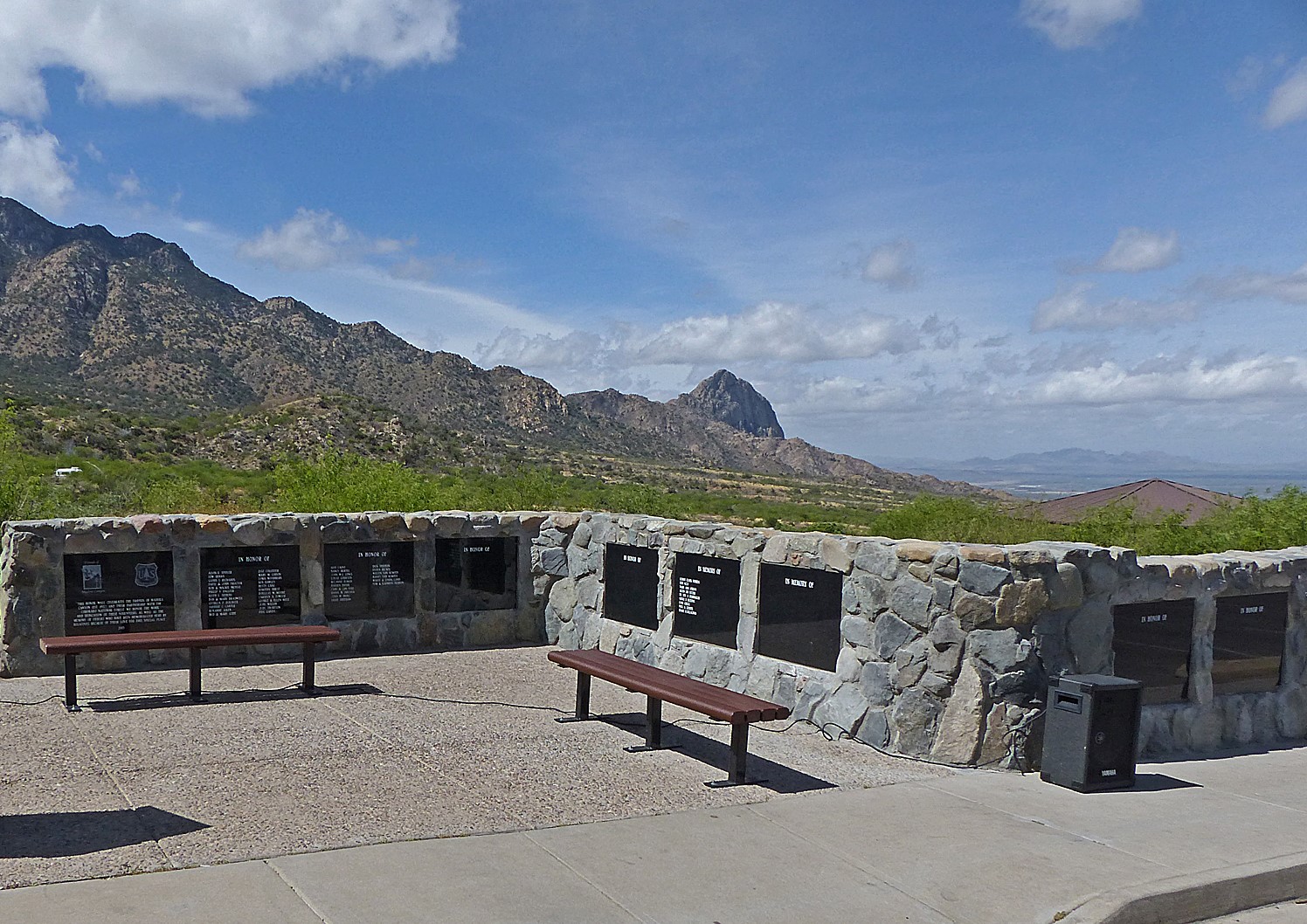
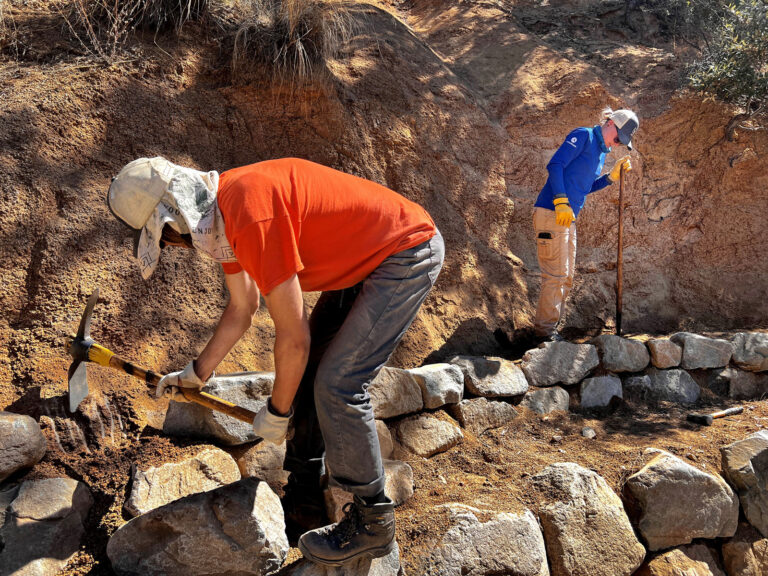
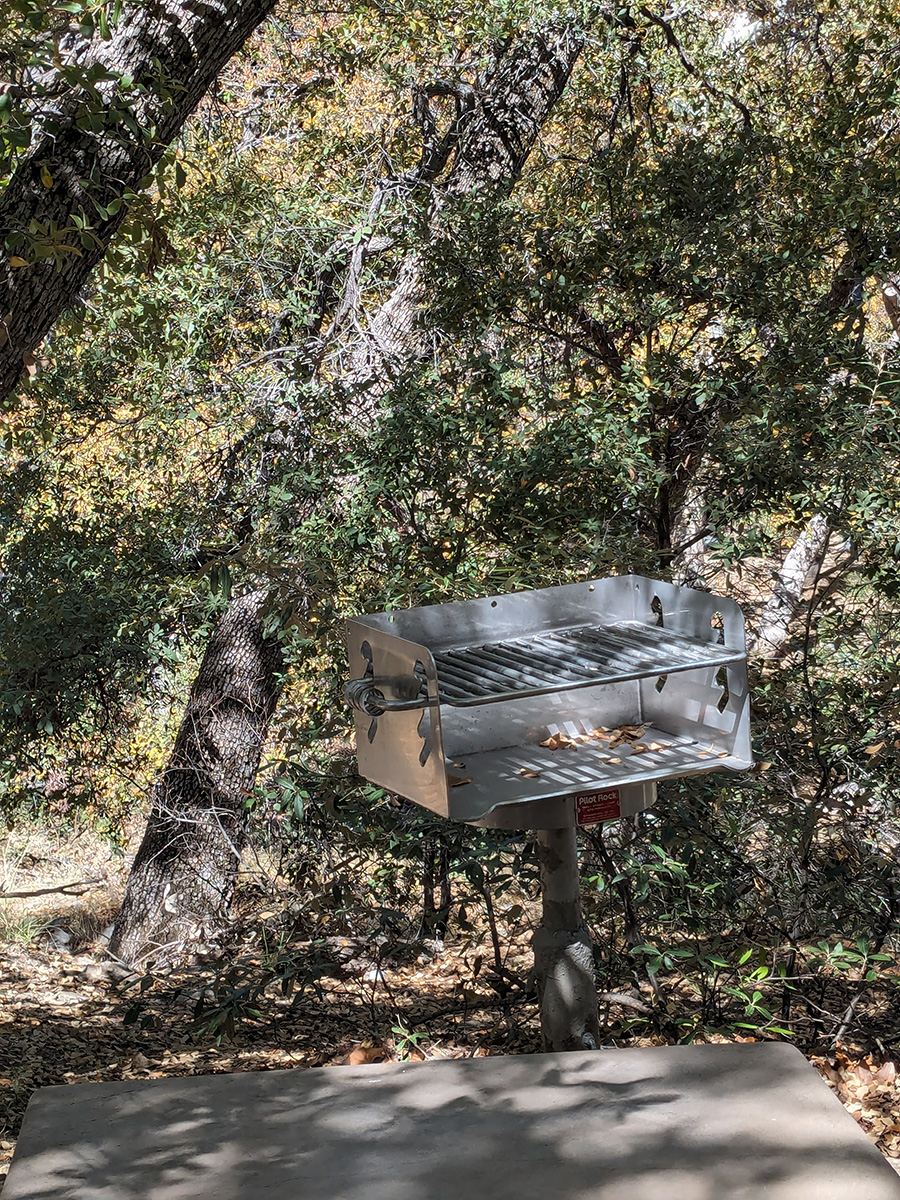
What’s New in Madera Canyon? What’s Next?
By Kevin Murphy, Editor NABUR
Autumn 2024
Kevin Murphy wrote:
In August the Friends of Madera Canyon completed a collaborative effort with the U.S. Forest Service to have each of the 44 grills in the picnic areas replaced with grills made of stainless steel.
But the Friends always has something else in the works.
Several other projects are on the horizon, including powder coating the picnic tables in the Whitehouse Picnic Area, replacing steps in the Madera Picnic Area and above the Wrightson parking lot approaching Old Baldy Trail, and a bench project.
Picnic tables may be finished this fall, and work on the benches comes next.
After Lauren Atkinson with the Forest Service assessed the condition of the 28 benches on the Proctor and Whitehouse loops between Proctor Road and the Madera Picnic Area over a year ago, Friends of Madera Canyon President Dan White secured a $5000 grant to help fund a project to renovate, remove, and replace the benches.
It got us thinking, “Well, maybe there’s an opportunity here as well. So, we kicked that around for a while, and then, it struck me. That’s something that maybe the Greater Green Valley Community Foundation would get behind,” he said. “So, I wrote up a grant proposal and, son of a gun, we have five grand to spend on benches….”
To read the article, Green Valley News/NABUR website.
Proctor Native Plant & Pollinator Landscape
The Proctor Native Plant and Pollinator Landscape was proposed by the USFS for habitat restoration and as nature education/interpretation that complimented the existing Bud Gode Interpretive Nature Trail Ramada. The installation of two picnic tables with ramadas in the center island of Proctor Parking Area cleared a large patch of surrounding mesquite trees and vegetation, making way for the planting of native flowering plants to attract and support local bees, butterflies and other pollinators, while providing an attractive natural landscape for canyon visitors to observe flowers and plant/pollinator interaction.
READ MORE
Now established and essentially self-sustaining, the nursery-grown plants initially required regular watering to survive. FoMC “super-volunteer” Dita Hagen visited and watered the entire landscape by hand weekly for over a year, with supplemental help from the FS and FoMC volunteers. FoMC volunteers also do seasonal “weeding mornings” to thin out returning native perennials and remove invasives like Desert Broom and Camphor Weed that threaten to take over the landscape.
Still some years from full size, landscape Desert Willow and White-thorn Acacia trees are already mature enough to flower. Wolfberry, Buckwheat, Tecoma, Hibiscus and other shrubs are also blooming in season, though it will take a while for the Ocotillos to grow tall enough to bloom. Penstemon, Cassia, Silverleaf Nightshade and other perennials are regularly reseeding. Native Fairy Duster, Velvet-pod Mimosa and Goldeneye are colonizing from the edges, as is a flowering milkweed vine. All the flowers are attracting pollinators! Already an excellent place to take camera, binocs and field guides to look at flowers and insects in spring, summer and fall, the Proctor Native Plant and Pollinator Landscape will continue to get better over time and provide enjoyment and nature discovery for years to come.
